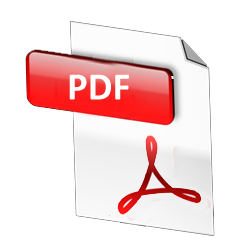| Authors |
Bezborodova Oksana Evgen’evna, candidate of technical sciences, associate professor, sub-department of technosphere safety, Penza State University (40 Krasnaya street, Penza, Russia), E-mail: ot@.pnzgu.ru
Bodin Oleg Nikolaevich, doctor of technical sciences, professor, sub-department of information and measuring equipment and metrology, Penza State University (40 Krasnaya street, Penza, Russia), E-mail: bodin_o@inbox.ru
Polosin Vitaly Germanovitch, doctor of technical sciences, professor, sub-department of medical cybernetics and informatics, Penza State University (40 Krasnaya street, Penza, Russia), E-mail: polosin-vitalij@yandex.ru
Ubiennykh Anatoliy Gennad'evich, senior lecturer, sub-department of information and computing systems, Penza State University (40 Krasnaya street, Penza, Russia), E-mail: utolg@mail.ru
|
| Abstract |
Background. The aim of the work is to develop an algorithm for constructing a mathematical model of a controlled object based on an analysis of the entropy of the distribution of an information-measuring quantum.
Materials and methods. In this paper, the properties of the information-measuring quantum and the possibility of its use for assessing natural variability in solving measurement problems and for algorithmic accumulation of measuring information are considered in detail. An information-measuring quantum is considered as the minimal formation of a mathematical model reflecting the essence of probabilistic physical processes occurring in a controlled object. The paper considers the possibility of using a multidimensional information measuring quantum for the analysis of the entropy of information contained in an array of measurement results obtained from a controlled object.
Results. A method of constructing a mathematical model of the object based on a comparison of information entropies of the model and the experiment is proposed. The value of the information contained in the entropy of the quantum distribution to assess the state of the controlled object is shown. The algorithm of choice and estimation of model parameters on the basis of the analysis of entropy of distribution of information measuring quantum is developed. For example, the distribution of the Weibull-Gnedenko and gamma distributions is illustrated by the choice of the form of the regression by comparing the coefficient of two-dimensional entropy information and quantum measurement, re-measurement results and the shape parameter of the statistical curve that is used as regression.
Conclusions. The results of the study of twodimensional information measuring quantum were used to construct a model of the relationship between the uncertainties of the time characteristics of the propagation of the autowave signal of the cardiac conduction system.
|
| Key words |
form of mathematical model, information-measuring quantum, uncertainty of quantity, statistical distributions, information entropy, Weibull – Gnedenko distribution, gamma distribution
|



